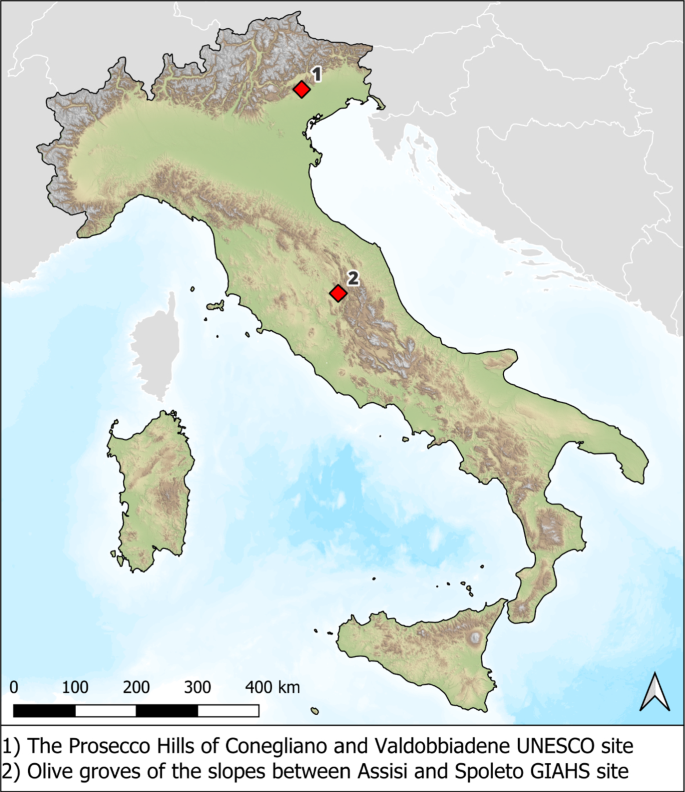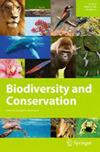评估两种文化景观在过去60年的交错带变化:以联合国教科文组织遗址科内利亚诺和瓦尔多比亚德内的普罗赛克山为例,以及阿西西和斯波莱托之间山坡上的橄榄树林为例
IF 3.1
2区 环境科学与生态学
Q1 BIODIVERSITY CONSERVATION
引用次数: 0
摘要
文化景观往往具有复杂的景观结构,为不同的动植物物种提供不同的栖息地、筑巢地、食物库和生态网络。不同土地利用方式之间的边界可以被同化为过渡带,而土地利用方式的变化也会影响过渡带的特征和相关的生物多样性。本研究旨在运用基于地理信息系统的方法,帮助理解被列入联合国教科文组织世界遗产名录和联合国粮农组织全球重要农业遗产系统计划的两个意大利文化景观的土地利用变化与过渡带特征和变化之间的关系。在过去的60年里,在这两个研究地点,农业面积减少,随之而来的是森林和灌丛的增加。这一趋势影响了过渡带的存在和密度,但影响方式因研究区特征而异。在Conegliano和Valdobbiadene的Prosecco Hills,联合国教科文组织遗址的分析记录了过渡带总长度的总体减少(- 6.4%),特别是第一级过渡带(森林和农业区之间的过渡带),由于失去了被森林重新开垦的高海拔牧场。第二层过渡带(不同类型耕地之间的过渡带)是由于混合栽培的减少和单一栽培的传播造成的农业马赛克化。在阿西西和斯波莱托之间的山坡橄榄林,类似的土地利用趋势导致一级过渡带总长度增加(+ 53.7%),二级过渡带总长度增加(+ 13.5%)。这两个地点突出的不同行为表明,土地利用变化和交错带变化之间的关系是特定于地点的。2个研究点一级过渡带的平均密度均有所下降(教科文组织遗址为- 20.2%,GIAHS遗址为- 30.3%),但最大密度保持在较高水平(教科文组织遗址为424 m/ha, GIAHS遗址为794 m/ha)。采用层次系统对交错带进行分类和应用的方法对交错带的识别和评价是有效的。研究表明,文化景观以重要的过渡带网络为特征,保护具有公认文化价值的景观也意味着保护过渡带及其相关栖息地和生物多样性。欧盟2030年生物多样性战略不应只关注增加保护区的数量和面积,而应考虑将传统文化景观作为生物多样性保护的支柱。本文章由计算机程序翻译,如有差异,请以英文原文为准。

Assessment of ecotone changes over the last six decades in two cultural landscapes: The case of the Prosecco Hills of Conegliano and Valdobbiadene UNESCO site and of the Olive Groves of the Slopes between Assisi and Spoleto GIAHS site
Abstract Cultural landscapes are often characterized by a complex landscape structure providing different habitats, nesting place, food reservoirs and ecological networks, for different fauna and flora species. Edges between different land uses can be assimilated to ecotones, and land uses changes over the years also affect ecotones characteristics and associated biodiversity. This study intends to contribute to the understanding of the relation between land use changes and ecotone characteristics and changes in two Italian cultural landscapes inscribed in the UNESCO WHL and in the FAO GIAHS (Globally Important Agricultural Heritage Systems) Programme, applying a GIS-based methodology. In the last six decades, in both study sites, agricultural areas decreased with consequent increase of forests and shrublands. This trend affected ecotones presence and density, but in different ways depending on the characteristics of the study areas. In the Prosecco Hills of Conegliano and Valdobbiadene UNESCO site the analyses recorded an overall reduction of ecotones total length (− 6.4%), in particular of the first level ecotones (the ones between forests and agricultural areas) due to the loss of high altitude pastures that have been recolonized by forests, and of the second level ecotones (the ones between different types of cultivated areas) due to the agricultural mosaic simplification caused by the reduction of mixed cultivations and the spread of monocultures. In the Olive Groves of the Slopes between Assisi and Spoleto GIAHS site, similar land use trends caused an increase of the total length of first (+ 53.7%) and second level ecotones (+ 13.5%). This different behavior highlighted for the two sites, demonstrates that the relation between land use changes and ecotones changes is site-specific. The average density of first level ecotones decreased in both the study sites (− 20.2% in the UNESCO site and − 30.3% in the GIAHS site), while the maximum density remains high (424 m/ha in the UNESCO site and 794 m/ha in the GIAHS site). The applied methodology and the classification of ecotones according to a hierarchical system demonstrated to be effective in their identification and assessment. The study demonstrated that cultural landscapes are characterized by important ecotones networks and that preserving landscapes of recognized cultural value also means protecting ecotones, and associated habitats and biodiversity. Instead of only focusing on increasing protected areas number and surface, EU Biodiversity Strategy for 2030 should consider traditional cultural landscapes as a pillar for biodiversity conservation.
求助全文
通过发布文献求助,成功后即可免费获取论文全文。
去求助
来源期刊

Biodiversity and Conservation
环境科学-环境科学
CiteScore
6.20
自引率
5.90%
发文量
153
审稿时长
9-18 weeks
期刊介绍:
Biodiversity and Conservation is an international journal that publishes articles on all aspects of biological diversity-its description, analysis and conservation, and its controlled rational use by humankind. The scope of Biodiversity and Conservation is wide and multidisciplinary, and embraces all life-forms.
The journal presents research papers, as well as editorials, comments and research notes on biodiversity and conservation, and contributions dealing with the practicalities of conservation management, economic, social and political issues. The journal provides a forum for examining conflicts between sustainable development and human dependence on biodiversity in agriculture, environmental management and biotechnology, and encourages contributions from developing countries to promote broad global perspectives on matters of biodiversity and conservation.
 求助内容:
求助内容: 应助结果提醒方式:
应助结果提醒方式:


